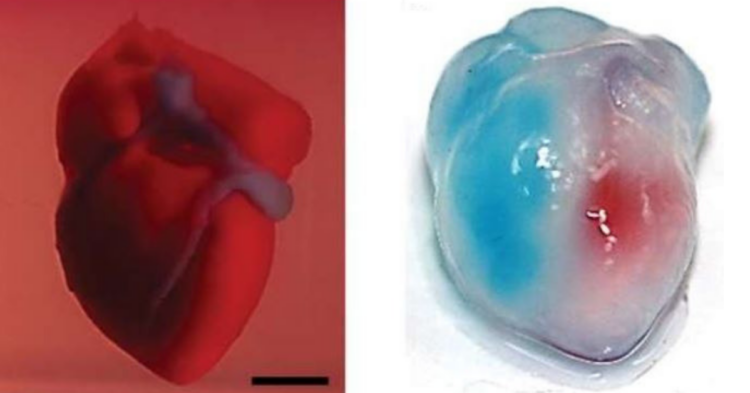There’s no doubt that 3D printing holds a lot of promise. The technology’s big selling point is that it can fabricate just about anything from scratch — and if you had any doubt, you’ll want to read this story.
3D printing has reached the consumer level.

While most people probably don’t own a 3D printer just yet, there are consumer versions on the market that sell for as little as a few hundred dollars. The tech is exploding in popularity.
What can be printed?
Just about anything, really. You could design a small widget to help an uneven table from bouncing around, or even replacements for the pieces in a board game or toy.
It’s reached the medical world, too.

In what’s being hailed as a breakthrough, researchers at Tel Aviv University in Israel have found a way to essentially use a 3D printer to create a custom human heart.
It took awhile to get to this point.

It takes more than a minute to go from nothing to a straight-up 3D-printed heart. Researchers have been able to use the technology to create simple tissues, but nothing complex enough to hold blood cells.
Here’s a look.

Unless you’re a med student, it’s probably hard to make much sense of this. But the goal is to use a patient’s biological materials to create a customized heart that their body won’t reject.
Customization is the key here.

We’re not talking about tricking the heart out like a lowrider, but rather creating a device, using the body’s biological data, that will work in concert with the body and function as it should.
It’s all about the bioinks.

Lead researcher Tal Dvir explained in a statement that bioinks are substances made of sugars and proteins. These substances incorporate biological materials from the body to serve as a base for 3D-printed complex tissues.
It’s a gamechanger.

“People have managed to 3D-print the structure of a heart in the past, but not with cells or with blood vessels,” explained Dvir. “Our results demonstrate the potential of our approach for engineering personalized tissue and organ replacement in the future.”
Let’s break it down.

Researchers draw cellular materials out of the body’s tissues. Some of these materials are called “master cells”, and they’re aptly named — because they’re the key to the whole operation.
These cells are adaptable.

These cells are unprogrammed by the body and can be utilized to create new cells or tissues anywhere in the body. From there, researchers create a matrix of master cells and a combination of collagen and glycoproteins.
How far have they come?

The 3D-printed heart isn’t quite ready to be implanted into a human patient just yet. In fact, at this point, the prototype they’ve created is about the size of a rabbit’s heart. But it’s promising.
When will they create a human heart?

It’s impossible to say, but it’s important to consider the scale involved: while the heart they’ve created incorporates millions of cells, a human-sized heart would require billions of cells.
Hypothetically, how would it work?

Open-heart surgery is a major source of stress for the body, and great care needs to be taken to ensure the body doesn’t reject the transplant. But if things go well, the heart can be “trained” by the body to function normally.
Here are the next steps.
While there are no human patients just yet, researchers are hoping to test their invention on animal subjects. If things go well, we’ll likely see follow-up studies in the near future.
3D printing, right?

It’s pretty incredible that this technology has been applied in so many different ways. Let us know your thoughts on this incredible story in the comments section!
















































